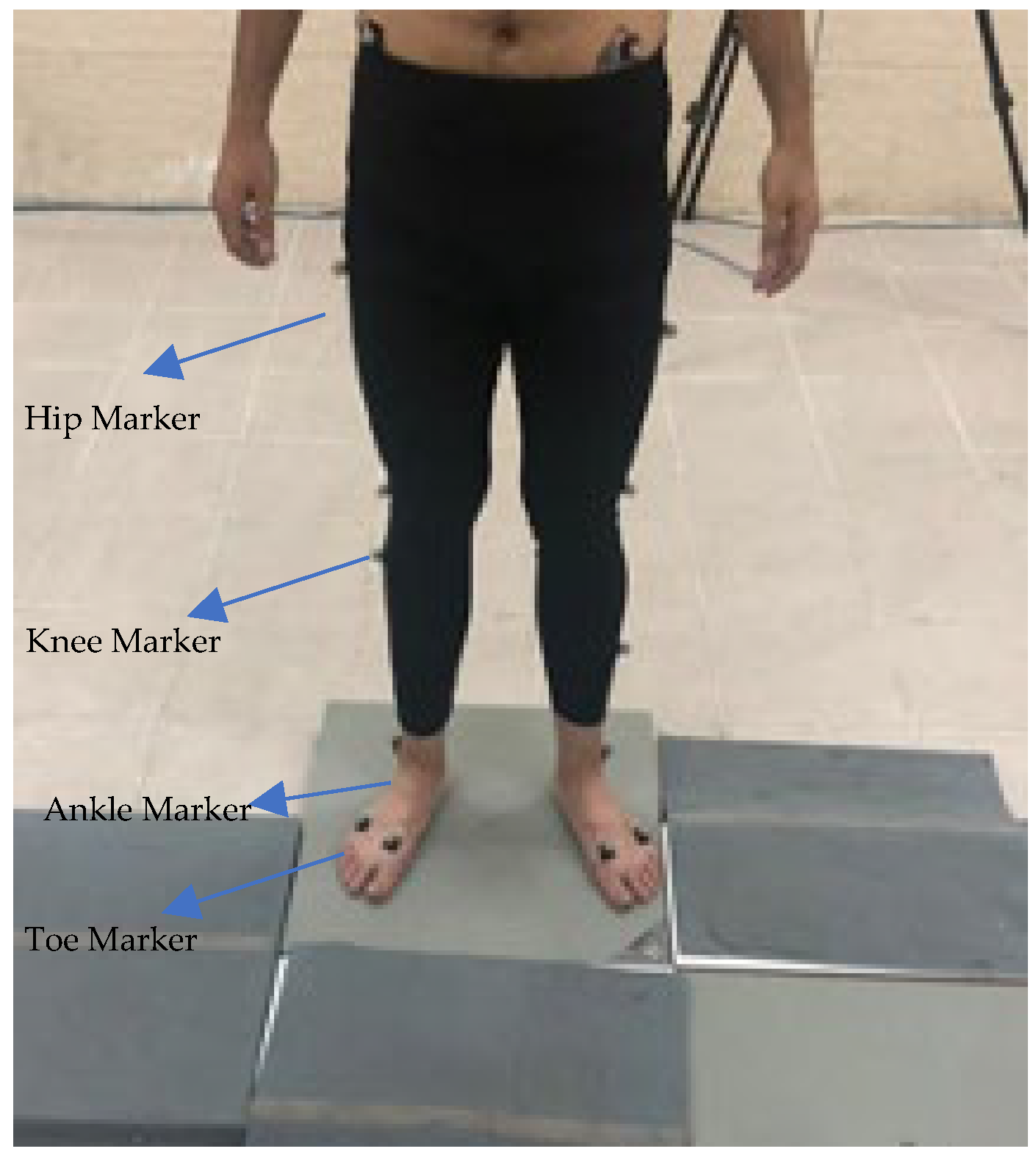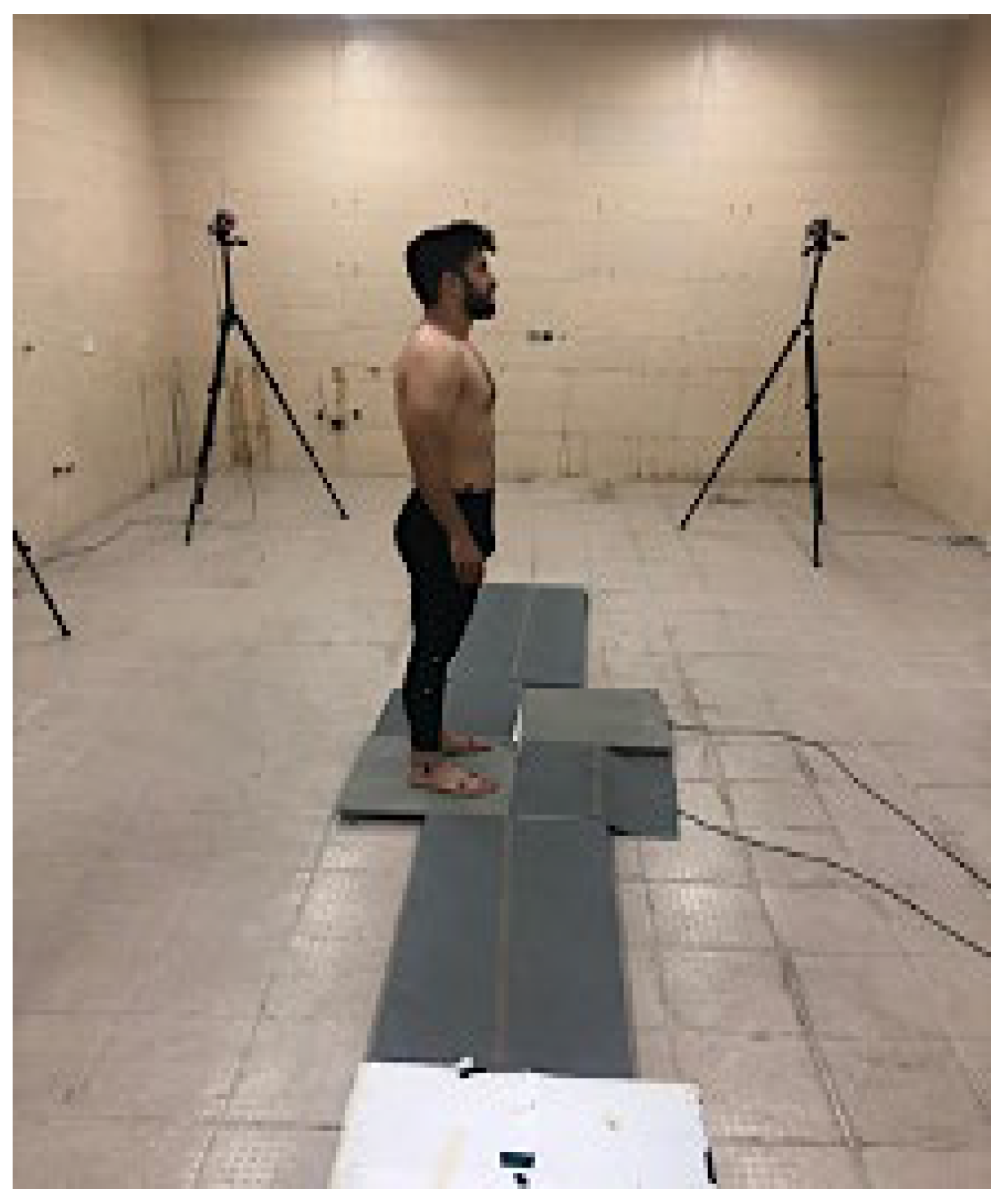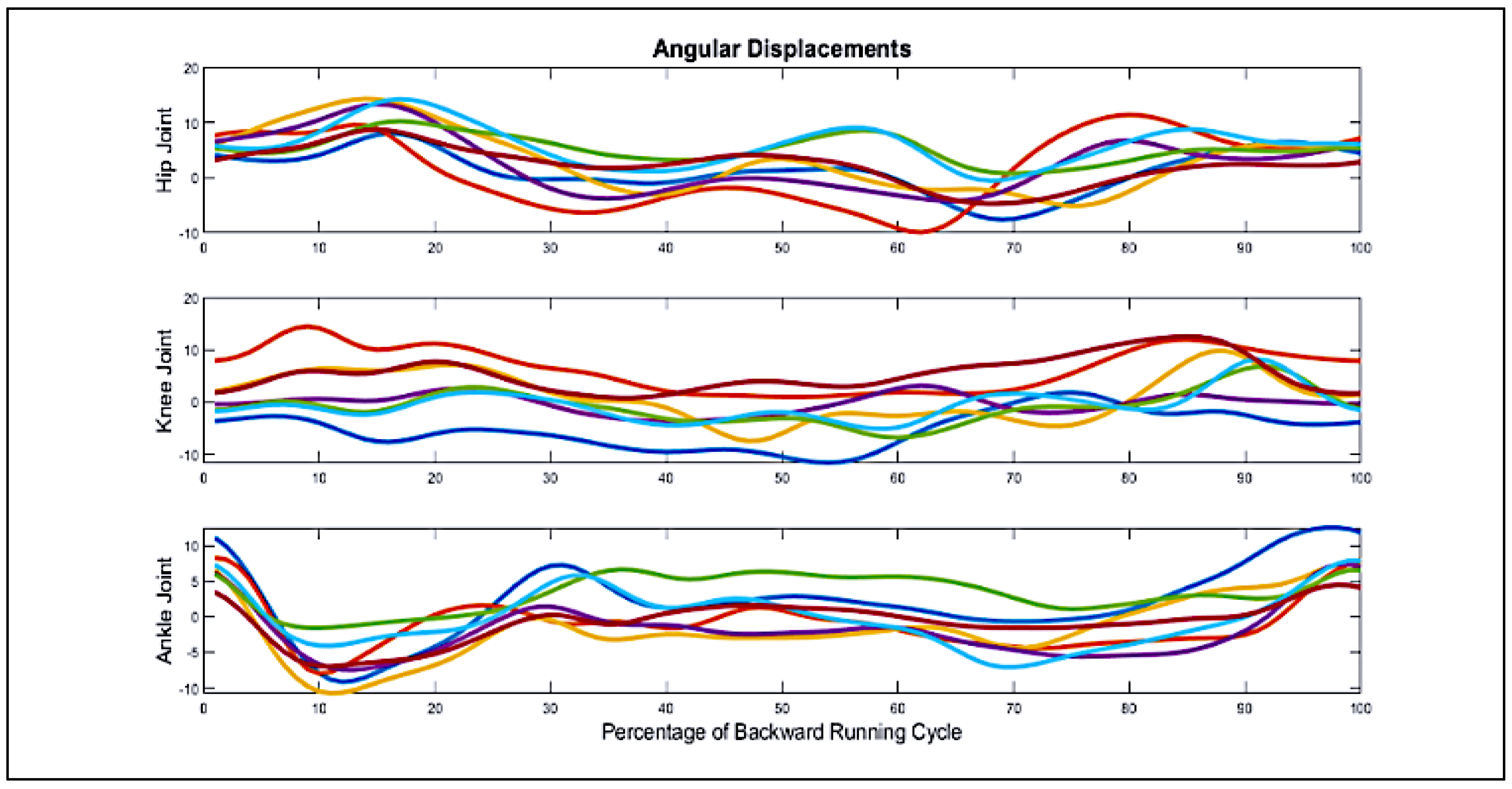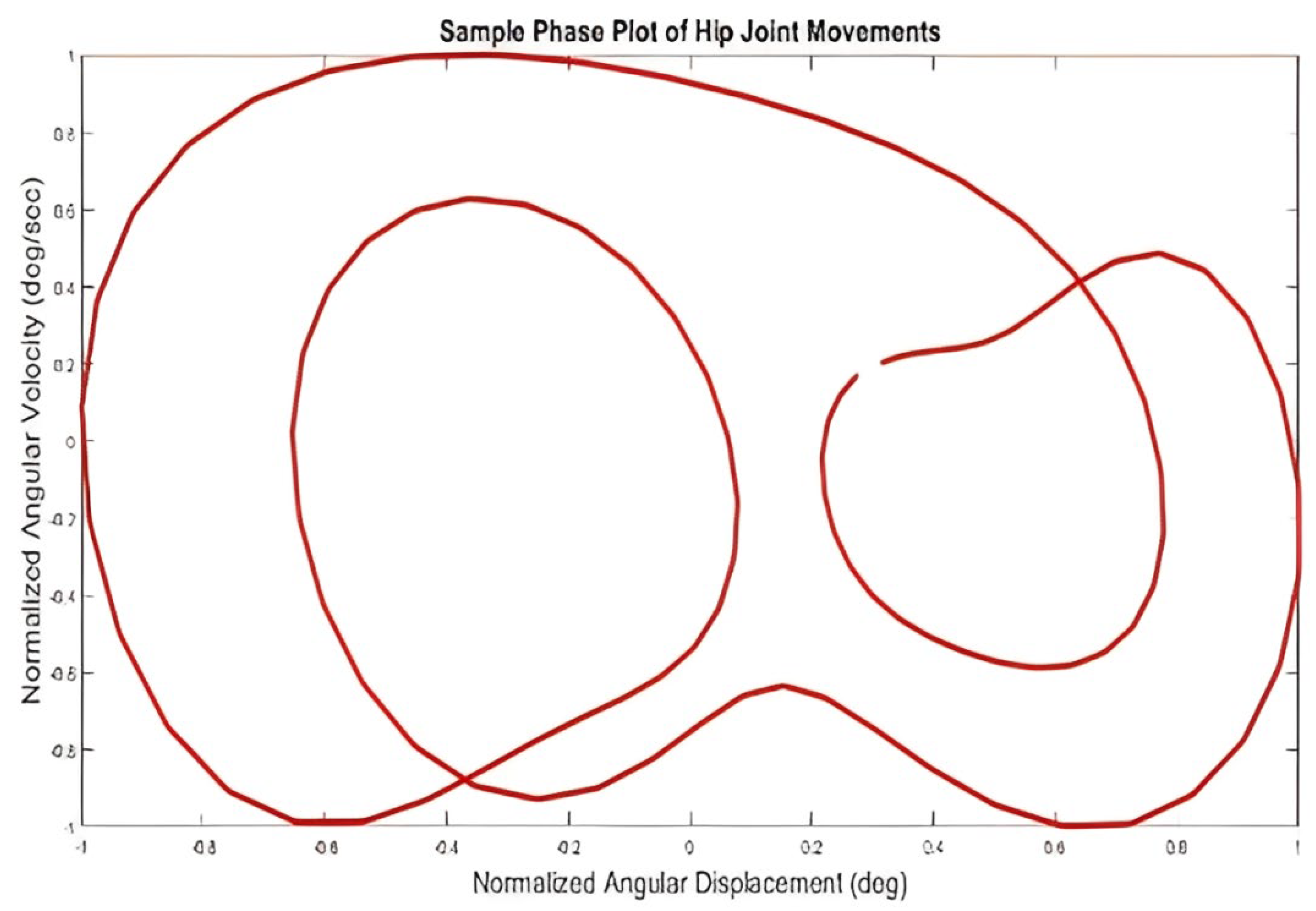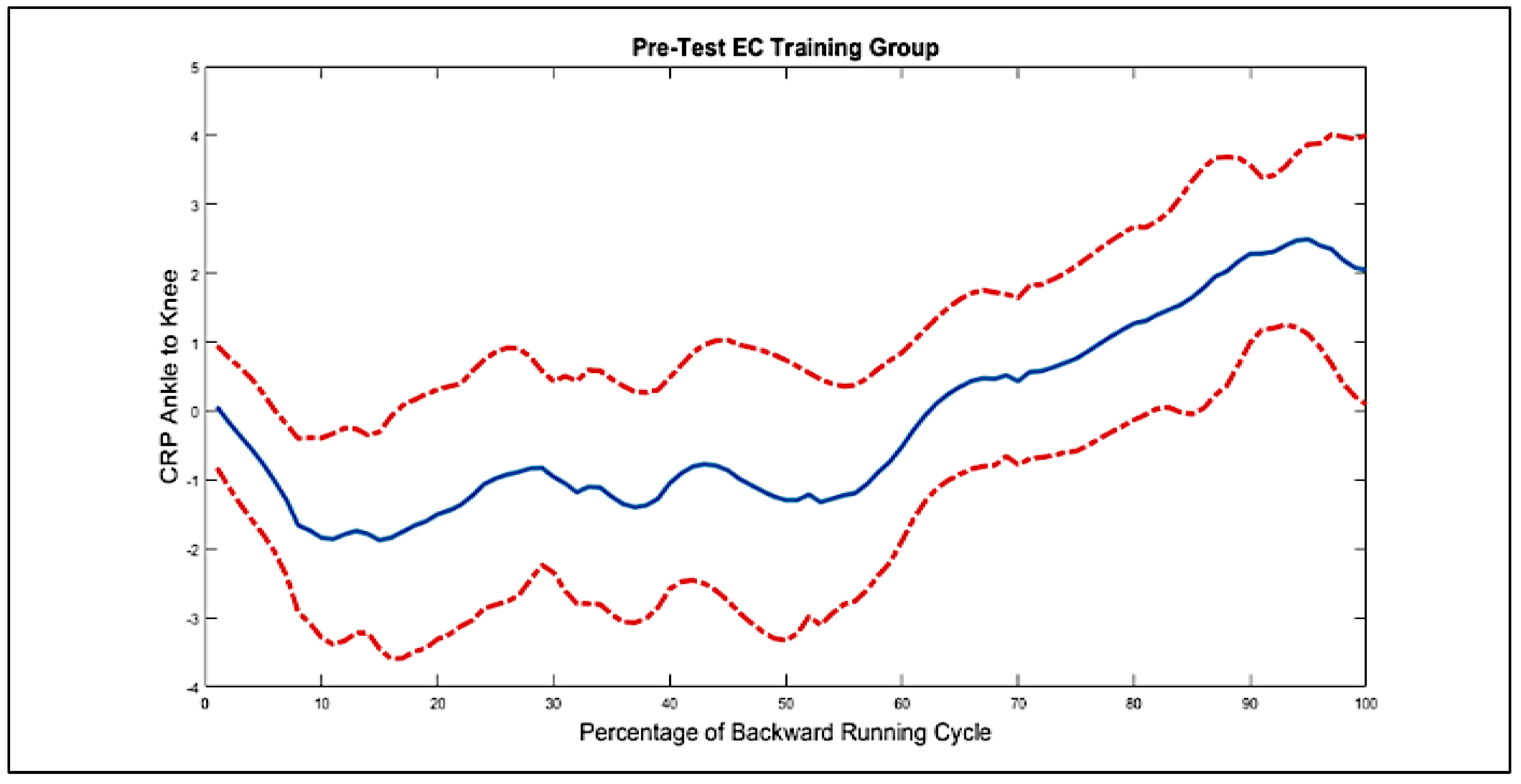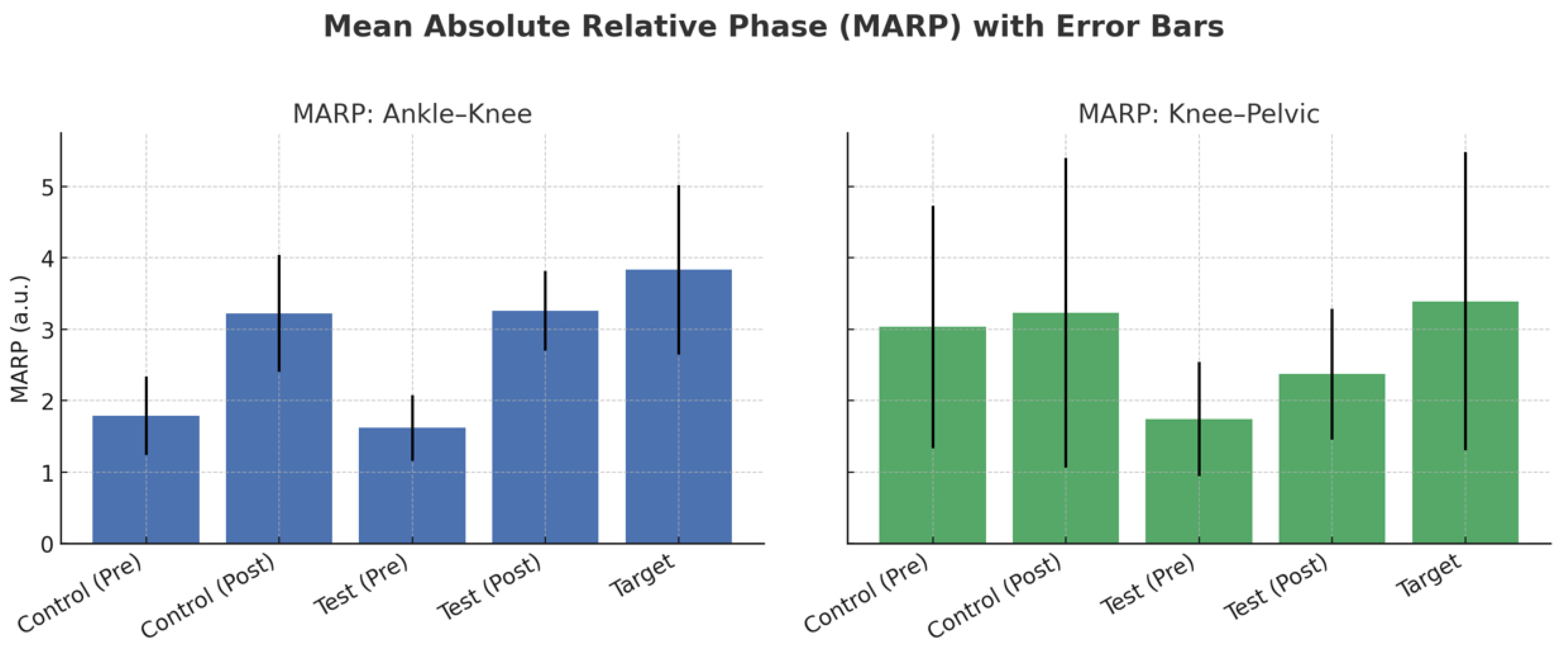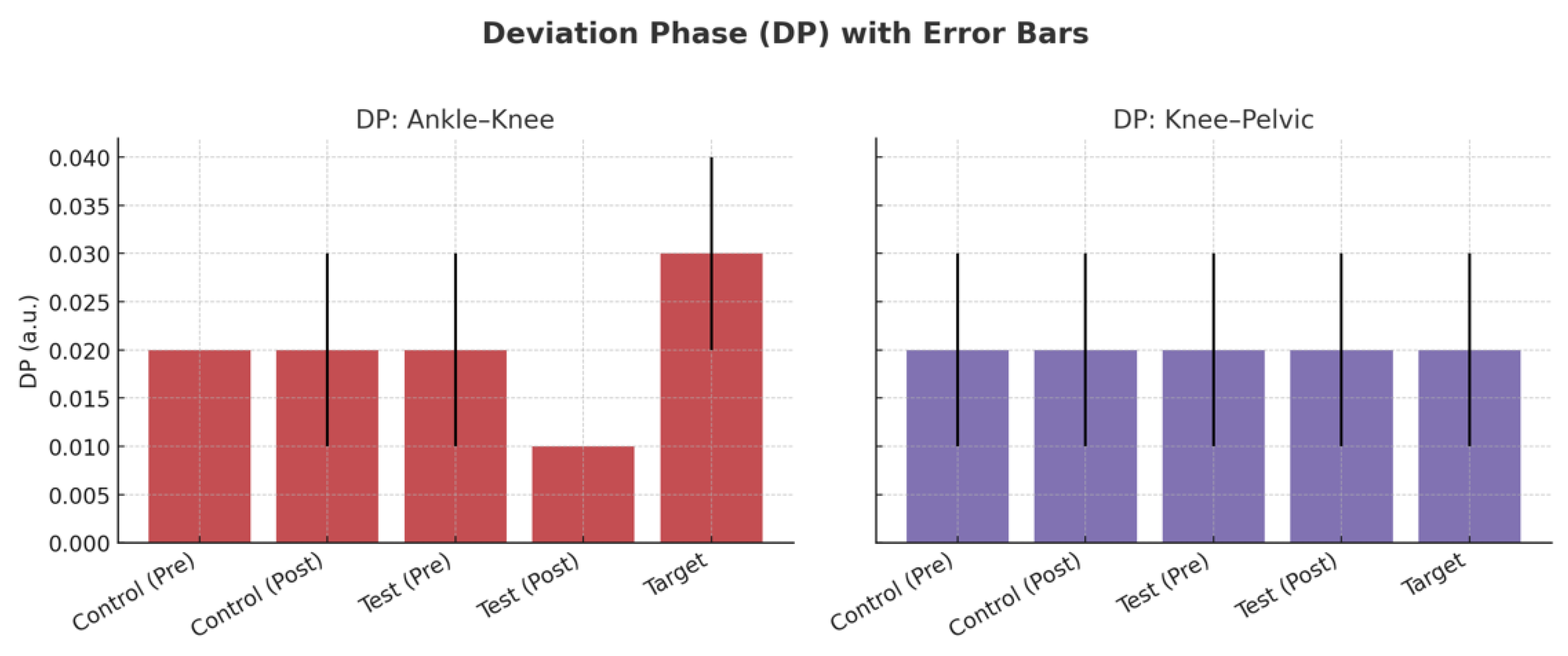This section analyzes the research findings both descriptively and analytically, with the descriptive analysis presented in the form of values of central tendency, dispersion, and shapes.
3.2. Comparison of Motor Coordination Results of Two Control and Test Groups in the Pre-Test
For this comparison, the subjects’ motor coordination was assessed using the MARP and DP indices and an independent samples
t-test to ensure that there was no significant difference between the two groups prior to training. To ensure there was no significant difference between the two groups before training, the independent
t-test was conducted, and the results (
t-values, degrees of freedom, and
p-values) are presented in
Table 4. According to this table, Levin’s hypothesis of equal variances in all indicators was rejected, and the variance of all indicators was found to be equal between two groups.
According to
Table 4, there is no noticeable disparity between the two groups prior to the exercises, and both groups exhibit comparable levels of organ coordination. Specifically, ankle–knee MARP did not differ between groups (t(12) = 0.64,
p = 0.53), knee–pelvic MARP (t(12) = 1.75,
p = 0.10), ankle–knee DP (t(12) = 0.37,
p = 0.72), and knee–pelvic DP (t(12) = 1.21,
p = 0.24) were also non-significant. The subsequent analysis presents the assessment of the disparity in motor coordination outcomes between the control and test groups compared to the target group prior to commencing the exercises. In order to assess the disparity in limb movement coordination between novice athletes (control and test group) and professional athletes (target group), A one-way ANOVA test was conducted using MARP and DP indices. The results, including F-values, degrees of freedom, and
p-values, are shown in
Table 5. Ankle–knee MARP showed a significant group effect (F(2,25) = 9.42,
p < 0.001), as did ankle–knee DP (F(2,25) = 7.85,
p < 0.01), whereas knee–pelvic MARP (F(2,25) = 1.98,
p = 0.15) and knee–pelvic DP (F(2,25) = 1.87,
p = 0.16) did not.
According to
Table 5, ankle–knee MARP showed a significant group effect (F(2,25) = 9.42,
p < 0.001), as did ankle–knee DP (F(2,25) = 7.85,
p < 0.01), whereas knee–pelvic MARP (F(2,25) = 1.98,
p = 0.15) and knee–pelvic DP (F(2,25) = 1.87,
p = 0.16) did not. To determine the difference between the groups, the post hoc test described in
Table 6 was used.
Post hoc tests in
Table 6, confirmed that professionals differed from both novice groups in ankle–knee MARP (test vs. target: t(19) = 4.76,
p < 0.001; control vs. target: t(19) = 4.85,
p < 0.001) and in ankle–knee DP (test vs. target: t(19) = 2.48,
p = 0.02; control vs. target: t(19) = 2.78,
p = 0.01). Differences between the two novice groups were non-significant across indices (all
p > 0.38). Knee–pelvic coordination indices showed no significant pairwise differences (all
p ≥ 0.13).
According to the results presented in
Table 3 and
Table 6, the following points can be made: The DP index, which is used as a stability index, is 0.02 in the control and test groups, and 0.03 in the target group while performing the exercise of backward running in ankle and knee joints prior to training. The follow-up test revealed the difference between the control group and the test group with the target group. This result can be explained in two ways: First, professional athletes exhibit greater instability than novice athletes when performing the task of backward running. This explanation contradicts the purpose of this study. We assumed that professional athletes perform better when running backward, so this study was designed to improve the performance of novice athletes. According to dynamic systems theory, professional athletes have a more flexible movement pattern and greater joint maneuverability by increasing their degree of freedom when backward running (less in-phase performance based on the MARP index), and thus their DP index is higher. On the other hand, it could be argued that novice athletes have more rigid movement patterns and tend to consciously control joint movements and coordination of ankle and knee joints, reducing the degree of freedom of the neurological system. This assumption does not contradict the study’s initial hypothesis of greater diversity in skilled systems, because the variability of dynamic systems is evaluated from both a quantitative and a structural perspective, and this structural variability must be evaluated by repeating the movement cycle a sufficient number of times, which is not possible in the laboratory setting. It is suggested that this issue be investigated in future research using wearable sensors while backward running at various speeds for different groups of athletes.
To compare the results of movement coordination in each group after the end of the exercises, and to evaluate the exercise’s effectiveness, the indicators before and after the exercise were compared using the paired
t-test. The results of this test are shown in
Table 7.
Table 7 compares two groups of novice athletes before and after training. According to
Table 7, In the control group, ankle–knee MARP increased significantly (t(6) = 5.02,
p < 0.001), whereas knee–pelvic MARP (t(6) = 0.19,
p = 0.88) and both DP indices (ankle–knee: t(6) = 1.56,
p = 0.16; knee–pelvic: t(6) = 0.85,
p = 0.43) did not change significantly. In the test group, ankle–knee MARP also increased (t(6) = 4.72,
p < 0.001), while knee–pelvic MARP (t(6) = 1.38,
p = 0.21) and DP indices (ankle–knee: t(6) = 0.82,
p = 0.44; knee–pelvic: t(6) = 1.09,
p = 0.31) remained non-significant. We can conclude that non-phase performance in this motor coordination has improved, and that the performance of novice athletes has now approached that of professional athletes in the target group. However, the findings revealed that stability (or flexibility) during the task did not change statistically following training. The results show that the MARP index increased significantly after training, indicating improved motor coordination between the ankle and knee joints. Similarly, MARP for the knee and hip joints improved following exercise, but the difference was not statistically significant. Furthermore, as shown in the table, no joint group’s DP index changed before or after training. In the control group, ankle–knee MARP increased significantly (t(6) = 5.02,
p < 0.001), whereas knee–pelvic MARP (t(6) = 0.19,
p = 0.88) and both DP indices (ankle–knee: t(6) = 1.56,
p = 0.16; knee–pelvic: t(6) = 0.85,
p = 0.43) did not change significantly. In the test group, ankle–knee MARP also increased (t(6) = 4.72,
p < 0.001), while knee–pelvic MARP (t(6) = 1.38,
p = 0.21) and DP indices (ankle–knee: t(6) = 0.82,
p = 0.44; knee–pelvic: t(6) = 1.09,
p = 0.31) remained non-significant.
A one-way ANOVA test was used to assess the effectiveness of each group as well as the interaction between the joints of novice and professional athletes, and the results are fully reported in
Table 8.
After training, group differences were non-significant for ankle–knee MARP (F(2,25) = 1.24,
p = 0.30) and knee–pelvic MARP (F(2,25) = 0.68,
p = 0.51). Ankle–knee DP showed a group effect (F(2,25) = 5.12,
p = 0.01), whereas knee–pelvic DP did not (F(2,25) = 1.74,
p = 0.19). To detect the difference between groups, a post hoc test was used, the results of which are shown in
Table 9. For ankle–knee DP, the test group differed from professionals (t(19) = 3.12,
p = 0.01), while control vs. test (t(12) = 1.80,
p = 0.10) and control vs. professionals (t(19) = 0.45,
p = 0.65) were non-significant.
Table 8 and
Table 9 show that novice athletes in both the control and test groups have movement coordination comparable to that of professional athletes.
Table 6 and
Table 7 show a statistically significant difference in MARP index in ankle and knee coordination before exercise; however, there is no significant statistical difference after training. The results also show a statistically significant difference in ankle and knee DP index between the test group (novice athletes who receive additional blindfold exercises) and the target group (professional athletes). Finally, using a one-way ANOVA test, the controllability and coordination of ankle movements were compared between professional and novice athletes in the presence of environmental disturbances. This evaluation is shown in
Table 10.
In disturbed environments (
Table 10), descriptive differences favored professionals over novices—e.g., ankle–knee MARP (0.63 vs. 0.42) and ankle–knee DP (0.59 vs. 0.14), as well as knee–pelvic MARP (0.48 vs. 0.31) and DP (0.53 vs. 0.23). However, none of these differences reached statistical significance (ankle–knee MARP: F(1,19) = 0.58,
p = 0.63; knee–pelvic MARP: F(1,19) = 0.50,
p = 0.48; ankle–knee DP: F(1,19) = 0.30,
p = 0.59; knee–pelvic DP: F(1,19) = 1.25,
p = 0.53). These results suggest higher ankle-movement controllability descriptively in professionals, but without inferential support at α = 0.05.
3.3. Interpretation and Practical Applications
Locomotion is the primary component of the process of human evolution. Motor skills are not innate in humans, but rather acquired through learning. While it is indeed true that certain human movements can be instinctual or formed by natural reactions, it is important to note that these movements can also be acquired and mastered through learning. The primary objective of human learning in relation to movement skills is to execute them with accuracy, precision, and efficiency. Furthermore, individuals seek details regarding the nature of the movement and its dynamics, including its evolution and transformations. One effective approach to acquiring knowledge and information about movement acquisition is to combine knowledge of movement control with the field of biomechanics. In the sport of handball, transitioning from an offensive to a defensive position requires the athletes to move in a backward direction [
27]. Given the visual system’s inability to be utilized, athletes rely on their proprioceptive sense in this scenario. In contrast, backward running exhibits distinct biomechanical traits compared to forward running. The knee and hip joint coordination before training among three groups is compared, and the results are presented in
Table 2 and
Table 3.
Table 5 and
Table 6 do not demonstrate a statistically significant distinction in terms of MARP and DP indices among the three groups (target, control, and test) even prior to training. This lack of significance may be attributed to the specific muscles engaged in the joints, as well as the involvement of the ankle and leg in running and motor neuron settings, as suggested by [
28,
29]. Nevertheless, the precise mechanisms by which individuals consciously manage and regulate joint stiffness remain uncertain [
30,
31]. Sports such as handball and trail running are at high risk of lower extremity injuries, especially to the knee, ankle, and Achilles’ tendon. Several factors contribute to the occurrence of these injuries. The findings of this study could help design effective prevention and treatment programs for athletes [
32]. In addition, complete statistical information (test statistics, degrees of freedom, and
p-values) has been reported in all tables to ensure clarity and transparency of the findings.
An important implication of these findings is their relevance to injury prevention. Handball involves frequent backward running and sudden changes in direction, which increase the risk of injuries to the ankle, knee, and Achilles’ tendon. The improvements in inter-joint coordination observed in both novice groups suggest that proprioceptive-based training, including blindfolded balance and backward running drills, may enhance joint stability and reduce susceptibility to lower-limb injuries. These results support the integration of proprioceptive training elements into handball conditioning programs to minimize injury risk and promote safer performance [
32,
33,
34].
This research examines the use of wearable sensors and bionic motion sensors to assess backward running. This research used bionics to mimic a computer for a more comprehensive understanding of bodily motions, using digital body models to assess forces during backward running. The collected data and approach may provide insights that could be explored in future research, such as in the design of virtual reality training programs or the development of intelligent insoles and motion sensors. However, these potential applications go beyond the scope of the present short-term study [
29,
30]. Our use of independent
t-tests, paired
t-tests, and ANOVA is consistent with previous coordination studies, for example, Galgon & Shewokis, who analyzed MARP and DP indices using these tests, and Ippersiel et al., who applied similar statistical procedures in spinal coordination analysis [
24,
25].
3.4. Limitations and Future Directions
This study has some limitations that should be considered when interpreting the results. First, the sample size was relatively small (28 participants), which may limit the generalizability of the findings to larger athlete populations. Second, the intervention period was limited to six weeks, and therefore, the present results only reflect short-term effects. The potential long-term impacts of blindfold training on coordination and flexibility could not be evaluated in this study. Third, although participants were instructed to maintain their regular diet, refrain from additional training, and avoid stimulant consumption, uncontrolled lifestyle factors such as sleep quality, nutrition, and previous training history may have acted as confounding variables influencing the outcomes. Future research should therefore recruit larger and more diverse samples, extend the training period to evaluate long-term effects, and control or measure lifestyle-related confounders more systematically.
Recent advances in artificial intelligence and machine learning open promising avenues for analyzing complex movement patterns in sports science. AI-assisted approaches have been successfully applied in diverse domains such as media literacy research [
35], distributed multi-agent learning [
36], aircraft design optimization [
37], sustainable architecture [
38], smart built environments [
39], and ethical frameworks for technology integration [
40]. Other contributions highlight the role of AI in blockchain-based food supply chains [
41], digitalization and mental health [
42], diagnosis and patient care [
43], healthcare supply chains [
44], health tourism [
45], energy systems [
46], and even clinical dentistry [
47]. These examples demonstrate the versatility of AI and suggest that future investigations of backward and forward movements in handball could benefit from machine learning techniques to enhance training design, injury prevention, and rehabilitation applications.
Among the applications of this study, the benefits for handball players can be summarized as follows: increasing agility and coordination of movement, promoting effective defense, preventing injuries, designing corrective exercises, more accurate training planning and increasing functional endurance. This study can also be very useful in the research and development of sports technologies. The backward motion data in this study can also be used in the development of wearable systems, motion analysis applications and training tools for coaches and athletes.
